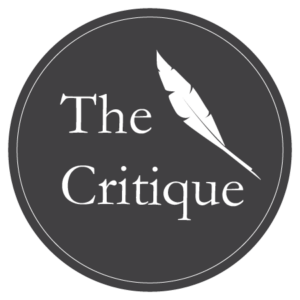Giving Feedback Across Cultures
Dr. Jens Schmidt, A German Executive in Shanghai
Dr. Jens Schmidt is an expat. The company’s corporate headquarters in Stuttgart, Germany, assigned him to improve efficiency at the company’s manufacturing plant in Shangai, China. During his first 90 days he came up with a list of quality issues and he shared this list with three of his direct reports (Mr. Zhu, Mr. Cao and Mrs. Ping).
He asked them for input on how to mitigate the issues within the next 90 days and what the “low hanging fruit” were. He emailed them on Friday evening and asked them to respond by Monday morning, enough time to review over the weekend. While Dr. Jens Schmidt was sorting out his moving goods that finally arrived from Stuttgart and settled into his apartment, Mr. Zhu, Mr. Cao and Mrs. Ping went for lunch. They did not appreciate that they had to leave their families on the weekend but they knew this was important. On Sunday night Mr. Cao, the most senior, eldest and most experienced manager responded to the email.
“Dear Dr. Schmidt, thank you for the trust you are giving to your senior managers by sharing this report with us before sending it to the headquarters. We are fully on board with you and we think you and the quality assurance team in the headquarters will give good guidance on how to mitigate the issues presented in the report. We kindly ask that you inform us of any changes once you have discussed this report with the headquarters. With kind regards, Mr. Cao”.
On Monday, when Dr. Schmidt came back to the office, Mr. Zhu handed in his resignation. Two weeks later Mr. Cao and Mrs. Ping also resigned.
Now, Dr. Schmidt had to lead 50 engineers directly. He was using everything he knew that worked in Germany — especially in terms of performance appraisal, and yet the Chinese employees seemed to be losing efficiency and effectiveness by the week. After 90 days, many engineers had moved to other companies and Dr. Schmidt had a hard time to explain to HR why he needed to hire new engineers and managers in the middle of a global crisis. His 180 days report looked bleak. The quality issues had become worse and Dr. Schmidt had nothing to show for but failure.
It took quite some time and effort on Dr. Schmidt’s part to recognize that what worked in Germany in terms of critical and to-the-point feedback was actually demotivating to the Chinese employees, who were used to more positive reinforcement than pure critique. These positive comments motivated them to increase productivity and put forth that extra, discretionary effort. Once Dr. Schmidt changed his feedback and his communication style in general he noticed that productivity improved again. He was also able to win the managers and some of the employees back once he understood the importance of relationships and the concept of “face” in the Chinese culture.
Three years later he managed to leave the country with a good feeling.
Feedback is Completely Misconstrued
According to the original mechanistic definition feedback occurs when an environment reacts to an action or behavior. For example, ‘customer feedback’ is the buyer’s reaction to a firm’s products and policies, and ‘operational feedback’ is the internally generated information on a firm’s performance.
Originally, the idea was that feedback changes behavior. Criticism or praise is considered feedback only if it brings about a lasting change in the recipient’s behavior. While I am generally critical of this assumption, I would like to explain here three major feedback styles that I have seen over my career. Often they work in a monocultural setting or when they are framed well. For example, critiques work well for writers and bloggers, the sandwich works well in an Anglo-Saxon environment and Hindi-style generally works well in Asia, the Middle East and Africa.
One major issue is that feedback often is NOT delivered well. Another issue is that often it is full of projections and that it has to be abused to justify why a good performer was not promoted. That is one of the key issues with feedback. For the next three styles we will assume that the feedback is well delivered, the feedback receiver asked for feedback and the feedback is not used as a justification for non-promotion or a performance rating.
German-Style: Pure Direct Critique

Clearly, people in Germany do not generally provide and receive feedback in the same way that people in China are used to doing. In fact, appraisal feedback can be very different across different cultures. Although not many like to do it, we know that critiquing – in a constructive and empowering way – others’ work is a crucial part of a manager’s job. However, critiquing someone often brings unwanted results and ends up hurting others even when this wasn’t the initial goal. This generally happens because criticism embodies two of the things that human beings hate the most, i.e. it calls for submission and it devalues.
With a focus on what needs to be improved, this method works extremely well for writers, bloggers and co-creators. In many instances, authors actually request it. It’s also often used in educational circumstances, training contexts and examinations. Here it is important to focus on the work, instead of the person. For example, “In this report, capitalization is not applied consistently.” or “This paragraph is hard to understand because it contains a lot of passive constructions.” Germans love “Sachlichkeit” so the focus here is on the object, the piece of art, the work output, rather than the person delivering the work. The intention here is to improve the overall quality of the work output.
US-Style: The Sandwich Feedback
The original sandwich feedback technique entails something positive to warm up the discussion, followed by some criticism which is the real feedback one wants to give, and it wraps up with more praise, i.e. again something positive to soften the actual feedback. In other words, the sandwich feedback method involves discussing corrective feedback that is “sandwiched” between two layers of praise.
There are two ways to put the sandwich feedback technique in practice:
- You start off with a positive comment, add constructive feedback with an explanation of how to improve, and end with another positive comment.
- You begin with a contextual statement (I liked…because…Now/Next time…) and conclude with an interactive statement, e.g. a question based on the work done.

This method is particularly helpful to managers when they want to discuss problems with the employee’s behavior. It is especially useful for those managers who find it difficult to deliver corrective feedback. It is important to note that you need to ask for permission to give feedback and also find examples of where you observe what you find worth changing. Here you should focus on behavior, rather than the person and soften it with “tend to” and “I observed” and “what this does with me…”. Speak about how it affects you. This approach takes the name of Non-Violent Communication (NVC) and it was developed by the American psychologist M. Rosenberg.
Hindi-Style: Focus on the Positive

In Bangalore, I learned another feedback style which I call “Hindi-Style Feedback”. Basically, here you focus on the positive and remain silent on the negative. In order to save face you don’t confront the person you are addressing directly. If you have negative feedback you would tell this to an intermediary who then decides about how to approach the topic with the person.
This method works well in the Asian context or when you generally already have a high-performing team and nothing major goes wrong. Focussing and reinforcing the strengths and the positive behavior will lift employees up and encourage them to do more of this behavior. Also, I think it is important to build a personal relationship before delivering feedback and better to deliver it 1:1. If you are only correcting errors and you have agreed a more direct style to do that it is acceptable if you have a good relationship with your team members.
In the SIETAR conference in Dublin in a pre-congress workshop my colleague Adrienne Rubatos and I co-created a feedback map with the participants.

We also suggested that feedback usually creates more harm than support and as humanistic coaches we therefore would propose to stop using performance management systems, Management by Objectives and certainly feedback. Where we feel feedback is helpful ONLY would be in learning situations, transitions and when it is explicitly demanded by the feedback-receiver.
I’m aware that this is a complete paradigm shift and that it will change our approaches to promotions, compensation, benefits, hierarchy and basically completely turn around how we work in organizations.
We are demanding a new approach to feedback. We promote an approach that is mindful, supportive and transcultural.
Delivering Feedback like a Global Virtual Leader
Even if in a new cultural setting it’s useful to learn the cultural rules, perhaps through a cultural mentor, don’t assume that “going native” is always and necessarily successful. Most of the time, you will have to adjust your feedback style and create a blend with which you feel comfortable enough in the given setting and with the person you have in front of you.
More and more often teams are global virtual teams (GVT) and there are no rules other than the rules the teams co-create. We have vast experience working within global, virtual teams and you find further blog posts via https://globalpeopletransitions.com/?s=global+virtual+teams.
Alternatively, you can join our RockMe! program or the RockMeRetreat where we discuss these matters based on your leadership challenges.
Instant Feedback Just Doesn’t Work. It’s Time to Evolve.
As our workplaces rapidly embrace international professionals and multiculturalism and become more diverse, an interesting development has come to light that I feel needs to be addressed at the earliest: the process of feedback in an intercultural context and how to tackle its many flaws.
These days there is this idea made common in several industries, particularly the tech sector, that abrasive, instant feedback is a way to stop beating about the bush and giving it straight to the recipient, sometimes even in public spaces. The idea being that the pressure created by the ‘tough love’ will motivate employees into bringing out their best, something that even Hollywood has glamorized with films like The Devil Wears Prada.
The reality is that there are issues with providing instant feedback, the most frequent one being that you fail to realize if the issue you are raising is concerning a person’s individual personality, or a cultural trait or was purely situational.
The second common issue is that feedback works differently in different cultures. Basically, your attempt at it may not even register, or come across in a negative manner. Americans, for instance, generally pepper in several positive comments before raising a negative one, while most Europeans are straightforward and critical about the whole thing. In a lot of Asian countries, feedback is discussed implicitly, and only provided in private settings and not in the public workspace. Do you see now how instant feedback could be misconstrued in an intercultural context? In fact, a lot of the latest discussions talk about ending the ‘traditional’ concept of feedback altogether, as it has shown time and again to not help improve performance. You can read about it here.
An important bit from the last paragraph was how feedback was culturally handled in Asian countries, in a one-on-one setting. It is actually now considered a preferable alternative to traditional feedback sheets. Combining that with the continuous feedback style is key to fostering a better relationship between employee and manager. It boosts the turnover rate for improvement as managers no longer have to wait for an arbitrary amount of time to discuss and motivate an employee, then wait another arbitrary amount of time before iterating on that previous session. Any undesirable behaviour or poor performance is not given time to grow as it could evolve into something worse.
One-on-one meetings further help this regular improvement along – these sessions allow for a more candid and diverse discussion that isn’t restricted to whatever rubric was set up on a feedback form. Combined, these two techniques can help managers bring out the best in their employees and build a more positive and constructive feedback cycle that is morale and productivity boosting. It is essential that this entire process be made a conversation, a two-way interaction rather than a session where a manager shares their rating of their employee’s skills. This is especially important as recent research and studies are showing what has been a constant point of discussion: that human beings are incapable of reliably rating themselves or other humans. You can read the thorough breakdown over at the Harvard Business Review, who make a strong case against the current practices of ‘feedback culture’.
Finally, I’d like to build on the concept of feedback but in a slightly tangential way: the idea behind ratings. Specifically, students rating their lecturers or teachers. Ratings have become an integral part of modern culture, we rate everything from food to places to car rides to memes. However, the entire concept is highly reductive and strips context and depth from any situation. For instance, giving an Uber driver driving dangerously a 1-star is not enough of a response, while a 1-star for a shoddy car will not fix whatever was broken in the vehicle. These rating systems are gamifying a complex thing and are fundamentally broken.
Coming back to students rating lecturers, I’m sure you can now easily spot the possibilities of exploiting the system to the detriment of the lecturer. Is a lecturer bad because he gave your essay a poor grade? Does that one poor grade negate an entire teaching period’s efforts? And is the student able to rate the knowledge areas she doesn’t even know existed?
All that nuance is lost when reduced to a rating system. Additionally, most lecturers are working in a gig-based economy, just like those Uber drivers, and they are at the mercy of these broken ratings system. So often those who entertain and let you pass easily will receive good feedback but those who challenge you and make you work harder will get negative feedback. And where do you think you learned more?
Given that we don’t know what we don’t know and our multi-facetted intercultural contexts, don’t you think feedback is overrated and an outdated concept?
Unless there’s an extenuating circumstance, don’t dignify these ratings systems by assuming they’re real feedback.
Let’s work towards reworking the ratings and feedback biases that drive so many of modern workplaces.
In our RockMeRetreat you will learn more about our bias in decision making and how we are less rational than we would like to think.
You will also learn methods that are more effective in helping yourself and others grow to your full potential.
The Transformative Power of Global Leadership Coaching

In today’s rapidly evolving global landscape, effective leadership is indispensable. Organizations worldwide are navigating through unprecedented challenges, from technological advancements to cultural shifts and economic uncertainties. In such dynamic environments, the need for capable leaders who can steer their teams towards success has never been more crucial. This is where global leadership coaching steps in as a game-changer, offering a myriad of benefits that extend far beyond individual growth to catalyze organizational excellence.
Understanding Global Leadership Coaching
Global leadership coaching is not just about imparting skills or techniques; it’s a comprehensive approach that fosters holistic development. It involves working closely with leaders across diverse cultures, backgrounds, and geographical locations to enhance their capabilities, broaden their perspectives, and maximize their potential. Whether it’s guiding executives through complex decision-making processes, facilitating effective communication across borders, or nurturing a culture of innovation, global leadership coaching addresses multifaceted challenges with a tailored approach.
Cultivating Cultural Intelligence
In today’s interconnected world, cultural intelligence (CQ) is a prized asset for leaders aiming to thrive in diverse environments. Global leadership coaching emphasizes the development of CQ, enabling leaders to navigate cultural nuances, adapt their leadership styles, and foster inclusivity within their teams. By promoting cross-cultural understanding and sensitivity, coaching facilitates smoother collaborations, minimizes misunderstandings, and enhances productivity on a global scale.
Accelerating Personal Growth and Development
At its core, leadership coaching is about unlocking potential and fostering personal growth. Through insightful conversations, feedback sessions, and tailored development plans, global leadership coaching empowers individuals to identify their strengths, address their weaknesses, and embrace continuous learning. Leaders gain clarity on their goals, develop resilience in the face of challenges, and cultivate the self-awareness necessary for effective leadership. This process not only benefits the individual but also cascades down to their teams, fostering a culture of growth and excellence.
Enhancing Communication and Collaboration
Clear and effective communication lies at the heart of successful leadership. Global leadership coaching equips leaders with the tools and strategies to communicate authentically, inspire trust, and bridge cultural divides. Whether it’s leading virtual teams spread across different time zones or negotiating with stakeholders from diverse backgrounds, coaching enables leaders to communicate with impact and build meaningful relationships. By fostering open dialogue and active listening, coaching cultivates a collaborative environment where ideas flourish, and innovation thrives.
Driving Organizational Performance
The impact of global leadership coaching transcends individual development to drive tangible results for organizations. Research indicates that companies with strong leadership development programs are more likely to outperform their competitors. By investing in the development of their leaders, organizations not only retain top talent but also cultivate a pipeline of capable leaders poised to tackle future challenges. From improving employee engagement and retention to fostering a culture of accountability and innovation, the ripple effects of effective leadership resonate throughout the organization, contributing to long-term success.
Navigating Change and Uncertainty
In an era marked by rapid change and uncertainty, agile leadership is paramount. Global leadership coaching equips leaders with the skills and mindset necessary to navigate ambiguity, adapt to change, and lead with confidence amidst uncertainty. By fostering resilience, creativity, and a growth mindset, coaching enables leaders to turn challenges into opportunities and drive positive transformation within their organizations. In times of crisis, effective leadership becomes the cornerstone of organizational resilience, enabling teams to weather the storm and emerge stronger on the other side.
In a world where the only constant is change, effective leadership is indispensable. Global leadership coaching offers a transformative journey towards unlocking individual potential, fostering cultural intelligence, and driving organizational excellence. By equipping leaders with the skills, mindset, and support they need to succeed in today’s complex landscape, coaching paves the way for a brighter future where leaders inspire, teams thrive, and organizations flourish. As we navigate the challenges and opportunities of tomorrow, investing in global leadership coaching is not just a strategic choice but a catalyst for unlocking the full potential of individuals and organizations alike.
Becoming a Better Leader by Unlocking your Emotional Intelligence
Five Steps to Overcome Your Cinderella Complex
I’m not happy with my weight; the last time I was happy with my weight was in 2004. I did a lot of research and there is a theme that I have come across that might help you as well. One reason I am very passionate about this topic is that it has bothered me almost all of my life. It started probably right when I left high school after my German “Abitur” at 19 years of age. I moved to the UK, where I was an Au-pair and put on five kilos in six months (I know the toast and English food was probably not the healthiest). The same happened when I moved to Australia when I moved to India when I moved to Switzerland, and again, it happened over the Pandemic and my broken foot incident in 2021. I always put on more and more weight. And believe me, this is hard for me.
In 2004, I went through a separation and joined Weight Watchers. I went to Esprit and wanted to try on pants in a German size 42, but I was a size 38 then. I was still not a model, and in online dating, I got feedback that my weight was not in the proper range to be considered for a partnership (!), but for me, this was the best weight I have had in a long time. So, let’s say it took 14 years to get from what I would call a “dream body” back to an “acceptable body,” and for the last almost 20 years, I could not honestly say that I was happy with my weight. I never wanted to have my photo taken.
I usually lost weight when I went through a separation, and I put on weight while I was in a relationship. I also think stressful times like cultural adjustment, a death in the family, or a global Pandemic can trigger weight gain. I learned that weight gain could also be a sign of Post-Traumatic Stress Disorder (PTSD). You can follow the “Crappy Childhood Fairy” for more related insights.
Maybe You Suffer from Adverse Childhood Experiences
When I was a teenager, I experienced two traumatic experiences. The first one was that my parents separated when I was 13, and the second one was that my father and sister died in a car accident when I was 16. And I believe to date that this was the worst day of my life, and it could not go further down from there. Sometimes, I tell myself I had to be an adult at 16, and everything that followed was happening in survival mode until I completely turned my life around. This was the year we moved to Switzerland, and I started my coach training. I’m not saying that nothing wrong happened to me in my twenties, thirties, or forties, but honestly, these issues seemed small compared to adolescence. People who know me well might confirm that I usually have a lot of energy and a strong sense of purpose. I get up early, do my thing and many of my clients confirm that they are supported through our process together. If you want to understand more about Adverse Childhood Experiences (ACE) read this article.
Maybe You Are Trapped in a Cinderella Complex
You might occasionally get hung up in a Cinderella Complex if you are a “creative daydreamer” like me (Check Joines, V. 2022 for further personality types). What is that?
“What is the Cinderella Complex? The Cinderella complex is a hidden desire to be saved. Deep down you don’t want to be responsible for yourself, and fear independence. The term was made popular by author Colette Dowling back in the 1980s, when she published a book of the same name.”
So, when I was in a relationship with a man, I would probably expect that this man would change my life significantly. Whenever I ended a relationship, I felt more clarity on who I was and what I wanted to pursue. I’m now practicing to follow my passion and purpose irrespective of the relationships and dependencies in my life. It is easier now than in my 30ies because the idea of having children is no longer around. I feel I’m in the best phase of life ever, and more is yet to come. I have a sense of ownership of my life and work that I never had before. I can do even hard things like losing weight now (I have other ideas in the pipeline, but I don’t want to share them yet). It’s time to reap the rewards of past labor.
I want to continue growing, learning, and self-improving, and I will continue to do what I recommend to you here. I will let you know once I have my dream body again. (It’s not there yet, but it’s a lot better than a year ago.)
1 – Seek a Group of Sisterhood
When we are going through a transition and would like to change or heal, we often have a harder time doing this alone. I recommend that you seek a support group or enter a course that will help you understand yourself better while others support you. Often, suppose you have been traumatized as a child. In that case, you will not have experienced the feeling of safety, and reproducing safety in your adult life will be key to integrating all aspects of your personality into your awareness. You can join a group with similar interests or seek a professional support group. Let me know if you want to join my group. I will start the next one after the summer break.
2 – Fast and Reduce your Clutter
If you are unsure where to start, reduce all your clutter and clean your home. I usually declutter at least twice a year, but last time, I did not go all in, and now I have more time on my hands again and feel I would like to take another go at de-cluttering. Fasting is also helpful, and you could think about fasting because of sugar, alcohol, caffeine, and stress. For that, you first need to identify the stressors for you and find out what keeps your nervous system calm. You might be more sensitive to noise, smell, and light than others. Maybe you have a hard time focusing in an open-plan office environment. Or maybe you have a hard time being at home every day. Feel what you need to stay calm and at ease. I have finally found an excellent app called YAZIO. It helps my fasting process. Check “A to Zen Life” for related videos on Decluttering and Healing from Toxic Stress.
3 – Apply one Minimalist Rule to Your Life
I was reminded how often I do this: “I will do x when y happened.” or “I will not do x until y happened.” I do this not only about not buying nice clothes, books, or other stuff but also about making decisions about relationships I know I should probably not engage in any longer. To overcome impulse buying, you might want to consider the “Wish Book.” Noting down wishes for the week also helps me to prioritize. If you feel you can’t afford an investment in something that would make you happy, you might need to trade it for something else. For example, you could sell an item before buying a new item. I like the minimalist rule of “One in, one out.” Or you could buy a piggy bank and sell items until you can afford that thing or piece of clothes or furniture.
4 – Tend to a Sacred Safe Space
One of the external stressors in your life could be that you have not yet developed healthy boundaries, and one way to practice that is by having a space in your home that you reserve for yourself or a small part of the garden that you tend and care for as your sacred space. You might also need to declutter relationships that no longer serve you. Add your style and artwork to the “sacred space.” Give it your signature touch. Make sure that other family members respect your space and don’t touch it.
5 – Develop a New “Me First” Work Routine
If you haven’t learned to set boundaries, chances are very high that you will always serve others first before you take care of your priorities. Over the long run, you might feel used and depleted. While it is okay to help others and be a giver, if you have been traumatized as a child, you will need to learn to stand up for yourself more and own your calendar at work. This is not always easy in the corporate world. Hence, I recommend starting with a baby step similar to the sacred space. Reserve 90 minutes in your calendar in the morning to work on your most important task of the day. Allow yourself not to be reachable and go to the gym or exercise before you do other work. These are five steps for overcoming your Cinderella complex. They will probably sound more accessible than they are. If you want to talk to me, schedule an appointment via Calendly: https://calendly.com/angieweinberger.
Book:
Shahroo Izadi (2018): The Kindness Method – Changing Habits for Good
Dowling, C. (1981): The Cinderella Complex – Womens Hidden Fear of Independence – https://www.amazon.com/Cinderella-Complex-Womens-Hidden-Independence/dp/0671733346
Joines, V. (2022): Insight Out
https://www.amazon.com/Insight-Out-Personality-Success-Relationships/dp/1977244629
Videos:
The Social Media Newbie Part 3 – From The Facebook to Facebook to Meta
Facebook has changed considerably since we initially logged in in 2008. Back then, Facebook was still called “The Facebook.” Facebook has advanced dangerously fast since then, and it’ll continue to adapt and improve at a quick speed however long it exists. Multiple updates and new features are rolling out regularly, but the core concept and workings have not changed essentially. It’s a place where you can connect and network. Being an expat, you can find like minded people and even make friends via Facebook groups.
It is now going to turn into a metaverse wherein we can interact in virtual worlds focused on social connections. Metaverse is however still in its introductory phase so we will see if it will be able to replace Facebook in the near future.
What is Facebook
Facebook is a social media network that interfaces individuals through an online platform. By sharing content like messages, status, posts, images, videos, and outside joins like blog entries, Facebook clients can contribute thoughts and discuss with others who share something similar or various interests. As well as sharing their thoughts, clients can draw in with the content others share on Facebook by responding to it with a like, a laugh, anger, surprise, and care reaction. Facebook is a great tool to gather feedback on your product/service and also to promote special offers to your target audience.
Organizations can utilize their Facebook Pages to stay in contact with their customers, target new ones, and offer direct customer support. To completely comprehend Facebook and how it functions, you’ll need to get comfortable with common terms utilized on the platform. Here is a rundown of key Facebook terms and what they mean.
What is Facebook Business
A Facebook Business or Facebook Page is open to all public accounts from Facebook that brands can set up based on their own theme and branding. It may also be used as a social page for Public Figures, artists, and people alike. These pages or Business accounts allow users to share contact information, post updates, share content, promote events and releases, and stay linked with their audience.
These pages can easily be integrated with profiles and Facebook shops to offer a broader package for businesses.
Create a Business Page
Before you can sign up for your Facebook Business Page, you have to log into your own Facebook account. You don’t need to worry: the data from your personal account won’t become public on your business page.
This is a relevant question because business pages often have more than one-page manager. The moderators are individuals with each their own individual Facebook accounts. Your personal account works like the way to give you access to your new business page. If you have partners assisting you with your business page, their own accounts will have equal access to the business as an admin account.
Along these lines, in case you’re not currently logged into your own account, log in now; otherwise, click on Sign Up to get started.
Setup Your Personal Account
To sign up for a Facebook account, follow these three easy steps.
- Visit Facebook’s website.
- On the homepage, enter your
- First name
- Last name
- Mobile number or email
- New password
- Birthday
- Gender.
Click Sign Up.
After you’ve signed up for a Facebook account, you can adjust your privacy settings to control who can see your profile and information. Follow these four simple steps to change your privacy settings.
- Click the arrow (downward-pointing blue triangle) on the top right corner of any Facebook page.
- Click Settings.
- Select Privacy from the sidebar.
- Set who is allowed to see your posts and how people can contact you.
Set Up a Business Page
To create a page for your business, follow these steps.
Visit the Facebook website and Open your Facebook profile.
Basic Setup:
- At the top of the homepage, select Create and choose Page.
- Name your page, and make sure to spell your business name out correctly.
- Add a category to describe your pages, such as a marketing agency or restaurant.
- Enter business information, such as address and contact information; the more detailed, the better!
- Select Continue.
Page Setup:
- You can add a profile photo to your page, then add a photo or business logo and click next.
- You can add a cover photo to your page. Similarly, add a cover or banner and click next.
- You may skip either of the pictures if you desire.
- Select Next to go to your new page when you have completed the steps.
Extra Setup:
- Link your website.
- Add a bio or about section for your business.
- Add as many helpful images as possible (menus for restaurants).
- Connect to Whatsapp Business (if any).
- Connect to Instagram Account (if any).
- Vanity URL (create a username in settings).
- Add business details (working hours, location, holiday timings, etc.).
Now Post! Ready, Set, Post!
The primary motivation behind Facebook is to help friends and family interface with one another. You can stay on top of your contacts’ minds by refreshing your status once in a while. To share a Facebook status, go to the text box at the highest point of your news feed page or on your profile page.
Types of posts:
- Feeling/Activity/Update
- Check In
- Tag Friends/Followers
- Tag Event
- Ask for Recommendations
- Poll
- Support Nonprofit
- Answer a Question
- Lists
- Facebook Stories
Open and Facilitate a Group
The Groups page on Facebook will show you which groups you oversee and those you are a member of. Likewise, you can find groups to join depending on Facebook’s ideas and a huge load of different factors.
To get to the Groups page, tap the Home button, and afterward, on the left sidebar, you’ll see the Explore segment, where you can click Groups.
Facebook Groups address an organic chance to contact many individuals keen on particular themes, yet without paying for ads. Joining and presenting on a pertinent Group as your Facebook Page helps individuals interested in your posts navigate your business page rather than your own profile.
This feature gives Facebook a major advantage over Linkedin and is a great way of building community.
Page Insights
The more data you have about your audience, the more targeted your content becomes and the better you can fulfill their necessities.
Facebook Page Insights makes it simple to assemble information regarding how your fans communicate with your Page and the content you share. To get to Page Insights, click Insights in the Manage Page menu.
Insights give you data about your Page’s general execution, remembering a few information for audience demographics and engagement. You can see measurements on your posts so you can see the number of individuals you’re coming to.
You’ll likewise perceive the number of remarks and responses are acquired from explicit posts-information that assists you with arranging future content.
Connect and Like Other Pages
Since Facebook is, all things considered, a social media platform-based organization, it’s really smart to involve your Page to construct a community for your business.
One method for building a community is to associate with other pages pertinent to your business (but not competitors).
For instance, assuming that you run a shop in a famous shopping region or shopping center, you could interface with different shops in your area. For example, consider this an internet-based adaptation of your neighborhood business improvement affiliation or office of trade.
Assuming you have a virtual business, you could associate with different companies in your industry that could offer extra benefits for your customers without contending with your offerings.
Look Into These Useful Features
- Events:
The Events page on Facebook will show you any forthcoming occasions popular with your Facebook friends or have been set up by the groups you take part in. Likewise, you can observe events dependent on their date, area, and class. - Marketplace:
Facebook competes with Netflix in the streaming business; they also rival eBay in the commercial industry. With Facebook Marketplace, you can peruse for a wide range of items, join groups to trade items with individuals in your space or who share comparative interests, search for items sold from various shops, shop by category, and sell your own items. - Pinned Posts:
Is there important data you need all guests to your Page to see? An advancement you don’t want them to miss? A top-performing piece of content you need to flaunt? Put it in a pinned post.
A pinned post sits at the highest point of your Facebook Business Page, right under your cover picture. It’s an incredible spot to put something eye-catching that will attract your guests and make them want to stay close by.
About the Author
Nabeha Latif is a Digital Media/Branding Consultant specializing in leveraging online marketing channels to achieve desired goals. Since her majors in digital marketing, she has collaborated with names like UN, Ali Baba Inc, Uber, UNESCO, UNDP, etc., to name just a few. She is also actively involved in providing business development services related to marketing.

The Social Media Newbie Part 3 – From The Facebook to Facebook to Meta
https://globalpeopletransitions.com/the-social-media-newbie-part-5/



